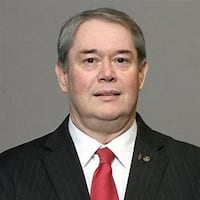Police have not finished compiling crime statistics for 2011.
Sgt. Steve Henderson, police spokesman, said the reduction is the result of “active enforcement, as well as a change in the way some of the prostitutes conduct business.”
Henderson said the majority of the arrests are made in the East Avenue area.
The majority of the arrests are “complaint driven,” meaning police are responding to neighborhood reports.
Police said there is prostitution in other parts of the city, but East Avenue is the biggest area because it’s a low-income region that allows prostitutes to blend into the neighborhood, said Sgt. Wade McQueen, who supervises the vice and narcotics unit.
Capt. Joseph Murray, the department’s operations commander, said he’s called for a patrol officer and a detective to make an arrest when he’s seen prostitution activity on the street as he went home.
McQueen said City Council helped by changing an ordinance to allow police to charge johns with loitering to engage in prostitution. Police can make an arrest if they find someone making multiple trips to a location known for prostitution or other reports of suspicious activity.
Police Chief Scott Scrimizzi said the crime isn’t something that’s going away, adding that the economy may be a factor in the reduction.
He said the penalty doesn’t keep prostitutes in jail for very long and many are back on the street soon after they are processed. Scrimizzi said “drugs are a huge part of the problem.”
“(Enforcement) is done on a daily basis, in addition to the larger stings,” he said. “If we hear about it, we’ll get on it.”
To help reduce these offenses, police conduct about five prostitution stings a year, in addition to other special details. Henderson said 281 arrests were made in four years, including busts made in stings and other details.
About 10 undercover police officers from Hamilton and other jurisdictions are used in an eight-hour shift during the stings. Hamilton officers are also used in other jurisdictions for undercover stings because they are not known in those communities.
According to the Hamilton Municipal Court, there have been 175 people who have appeared on various charges related to soliciting for prostitution since 2008. Eighteen were men who appeared on soliciting or another related charge.
One woman, Debbie Lynn Agee, 47, of Hamilton, has nine convictions since 2008. She is incarcerated in the Butler County Jail, serving misdemeanor sentences for soliciting and drug possession. Agee also owes the court $3,522 in fines and court costs.
She has 56 prior charges going back to 1991 that include solicitation, theft, receiving stolen property, trespassing, disorderly conduct, open container in a motor vehicle, criminal damaging, making false alarms, unauthorized use of a motor vehicle, drug abuse and drug paraphernalia. Seventeen were prostitution-related charges. Court records also note that 17 of the 18 men who have been convicted of solicitation-related charges were not repeat offenders. One man, Bill C. Griffin, of Hamilton, was charged three times since 1993 with solicitation, but was convicted once in 2008. He served five days on a 60 day jail term and was placed on two years probation. Court records show he owes the court $710 for fines and court costs.
In the last four years, there have been four women charged with four prostitution-related offenses and 11 others charged with three prostitution offenses, according to court records. The records also indicate there were 23 women who were charged for second offenses during that time.
McQueen said prostitutes also are getting better at running their business because of technology. He said fewer women are walking the streets. They’re using cell phones and the Internet to set up their tricks instead.
“Technology has hindered our investigations, so we have to resort to other means,” McQueen said. He declined to comment on the tactics.
McQueen said there are social services that work with women to get them out of the vicious cycle of prostitution.
Henderson said some of those agencies include The Bethel House in Cincinnati, the Oasis House in Dayton, and the Greater Cincinnati YWCA. He said some of the agencies have federal grants to rescue and restore victims of human trafficking.
For McQueen, he said the hardest thing is when these women refuse to get help to get out of that lifestyle.
“But that can’t happen until they decide they want help,” he said.
About the Author
